Adult Swim’s newest animated show, Common Side Effects tells the story of Marshall, an ethnobotanist who has discovered a mushroom that can cure any injury or disease. But “Big Pharma” wants to keep Marshall’s discovery a secret, and he’s soon a fugitive with his life in great danger. Marshall must team up with unlikely allies, including his former lab partner and now pharmaceutical employee Frances, to keep his world-changing discovery safe. Common Side Effects is a fast-paced comedy-drama that confronts modern attitudes towards health and sickness and asks what people would really do if that mythical “wonder drug” truly existed.
Game Rant spoke to Common Side Effects co-creators Steve Hely and Joseph Bennett about the multi-year process of developing their new show. They discussed the many inspirations behind Common Side Effects, the unique challenge of telling a healthcare- and illness-focused story in a post-COVID world, and the bizarre but always fascinating dynamic between Marshall and Frances. They also tackled the challenge of maintaining Adult Swim’s signature humor in such a dramatic show and what it was like to feature “Big Pharma” as the show’s main villain. This transcript has been edited for clarity and brevity.
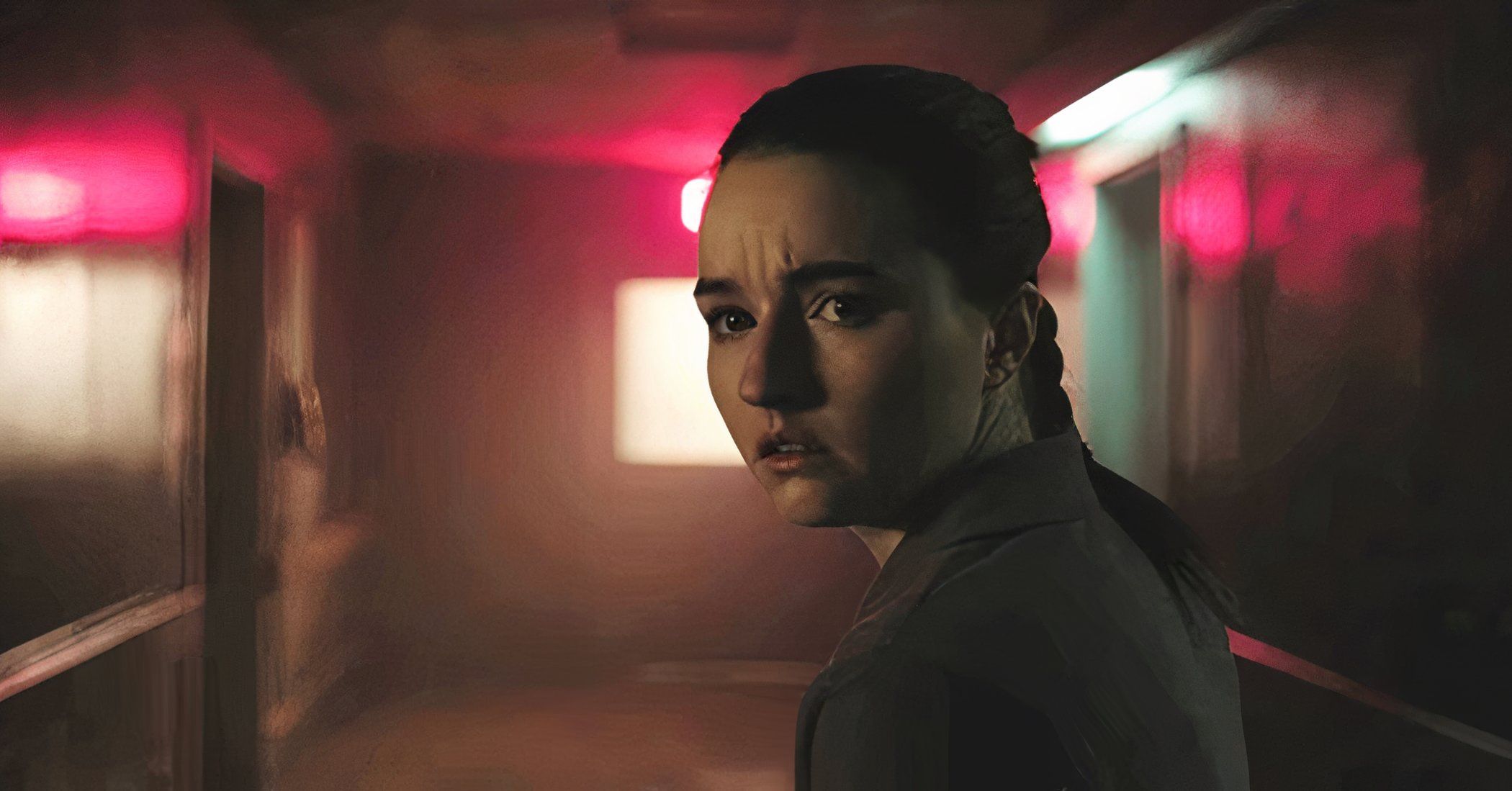
Related
Last of Us Season 2’s Kaitlyn Dever Discusses Abby Role and Taking on ‘Such a Large Fandom’
The Last of Us Season 2’s Kaitlyn Dever opens up about her role as Abby Anderson in the upcoming series’ return.
The Origins Of Common Side Effects
Q: Where did the initial idea for Common Side Effects come from?
HELY: A lot of themes and ideas and people and events that Joe and I were thinking about. Mushrooms are interesting and strange. Some of them can kill you. Some of them make you feel funny. Some of them are delicious. They’re weird. There’s so much we don’t know about them. The more you learn about them, the weirder and stranger they get – the way they spread, the way they reproduce, the way they are cultivated, the way people use them. That was something we were picking up on.
Our characters are inspired by Terence McKenna and Wade Davis and Paul Stamets, these oddball, independent researchers who are pushing the boundaries of health and medicine. And Joe and I, like everybody else in the world, have encountered the massive insurance [and] health care system that we all have to deal with. It’s incredibly frustrating and annoying – how do we get to the humanity of that?
NOTE: Terence McKenna was an ethnobotanist who studied psychedelics, Wade Davis is an ethnobotaonist and cultural anthropologist, Paul Stamets is a mycologist and expert in medicinal fungi.
Plus, Joe and I were thinking about a lot of thrillers. Coen Brothers movies – things that bend genre, shows that are both comedies and dramas at the same time. And moments: strange people we encounter on the street who seem in one state of discombobulation or another. You can see that they’re a person struggling with whatever they’re dealing with.
All of that was going into a big stew, along with ayahuasca and psilocybin and our food being healthy or not healthy. What does “toxic” mean? How is it that CEOs have so much power over our healthcare? All that stuff was going in, and we’ve been talking about it for over five years now, and we tried to put that into characters, into the show, and to make a story that was thrilling and exciting.
Q: Joe, you recently worked on Scavengers’ Reign, which is another story about characters being in constant danger from these huge external forces. How were the experiences of developing these two shows similar or different?
BENNETT: I think there were some kind of overlapping themes – dealing with the natural world, humans, their relationship with nature, and some people kind of resisting and some people kind of like leaning into it. It’s a different kind of show, tonally. This is where we were influenced, like Steve was saying, it’s a little bit more aligned with a Coen Brothers movie, Burn After Reading, something like that. Something toeing the line between drama and comedy.
And, I think that was maybe a bit of a challenge – something so different from Scavengers’ Reign. Scavengers’ Reign is maybe a bit more serious. But, I would say, in a similar way, I was just trying not to think about defining the show in any kind of genre, and really just make it about the story and the characters’ relationships. Ursula and Sam’s relationship in Scavengers’ Reign was a really important thing, and Azi and Levi, and then having this backdrop of this merciless environment with nature around them is such a nice kind of contrast.
And I think, similarly, thinking about Marshall and Frances, they’re the core of the story with Common Side Effects, and their relationship is sort of the root of everything. And then around that is just this nice, flowery world of oddballs and eccentricities.
Q: I love how Common Side Effects is this very intense story, but you maintain this consistent humor that’s very characteristic of Adult Swim shows. Like there’s this great moment where Marshall’s trying to talk about his plans in a coffee shop and gets distracted by hearing them call a guy named “Gegory.” How did you balance telling this very serious story while also incorporating humor?
HELY: That just seems very true to life for us. Even if you’re driven on a very life and death kind of task, you’ll just encounter these odd little moments and strange people that you have to deal with or interact with along your way. And that’s just sort of our view of the world. It’s both high stakes and silly, often at the same time. And we just tried to find ways to inject that into the show.
BENNETT: The amount of time that Steve is probably thinking “I told you so” about the Gegory bit. I remember from the get-go, I was struggling with it, I was like, I don’t know if we should put it in. He’s like “It’s funny! Why do you not [get it]?” And now everyone has brought it up. It’s so memorable.
HELY: It’s hard to convince [someone], if you’re like “That’s not funny.” “Yes, it is funny.” It’s hard.
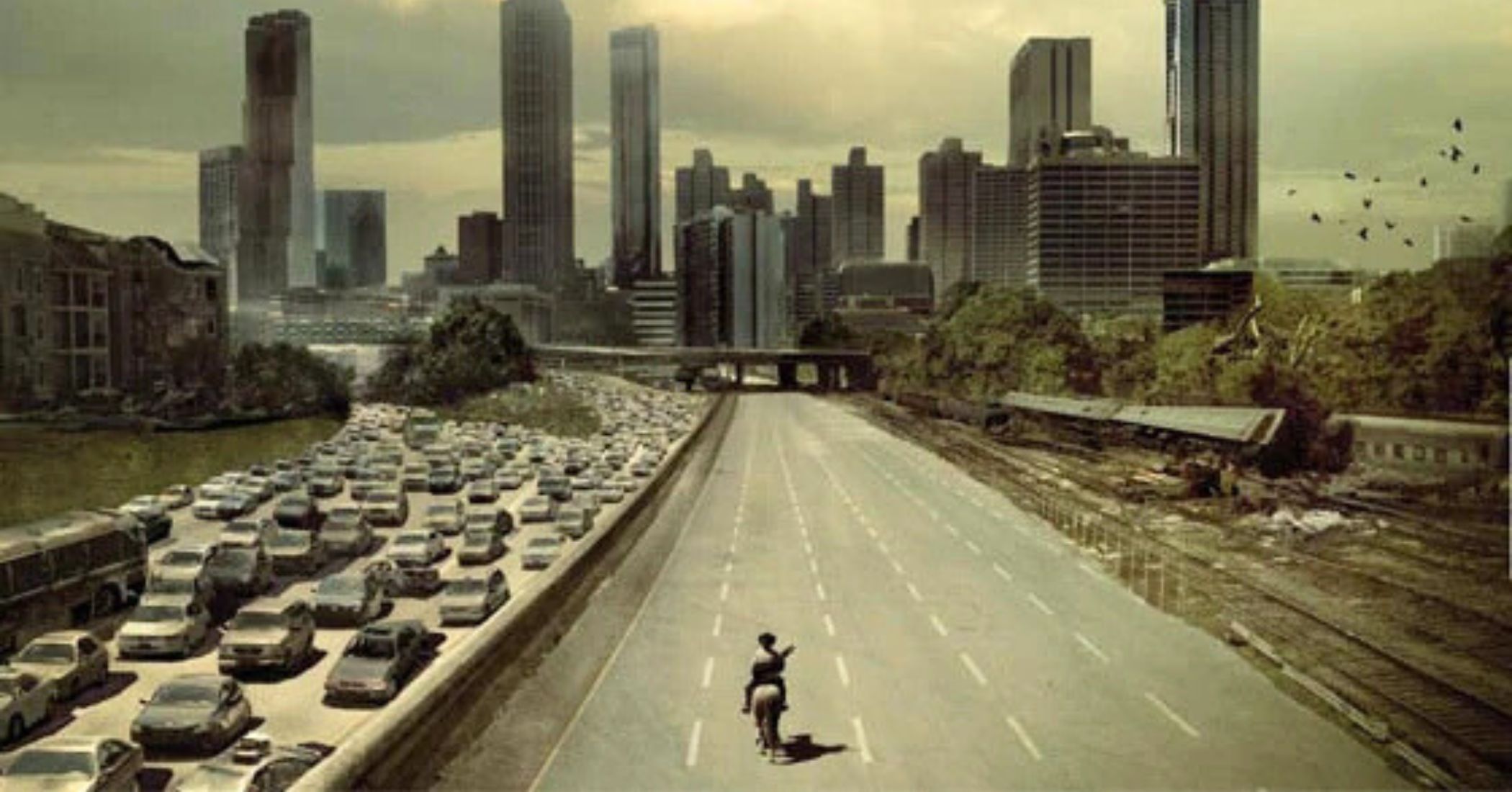
Related
The Walking Dead Behind-The-Scenes Image Reveals How Show’s Iconic Shot Was Filmed
The Walking Dead’s most iconic shot gives fans a glimpse at how it was filmed with behind-the-scenes images.
Setting, Themes, And The Influence Of COVID-19
Q: I loved the variety of settings you use for this show – Marshall travels to South America, then he’s at a dump site in North Carolina. I’m from North Carolina. I love that that’s your dump site. How did you decide which locations and settings to use for Common Side Effects?
HELY: There are a lot of strange discoveries constantly made in South America. And, [in] the career of any ethnobotanist, he’s going to end up in the remote highlands of Colombia or Brazil or something. And that seemed true to us. And then, there’s just a lot of unexplored flora and fauna down there. It could have been Asia. This is where we have yet to fully tap their potential, or even start. I mean, we were talking to a mycologist who lives up in the Pacific Northwest, and he was telling us he’s discovered hundreds of species just in his own backyard.
And then, North Carolina. I was traveling down there and was just interested in it. Joe’s from Georgia, and there are some true stories of dump sites and those kinds of rural places where they suspect no one’s going to be paying any attention. There are interesting things, like the pine tar business. People finding old kilns out in the woods. Spooky, strange, interesting places. We usually try to know something about the places that we’re writing about. There are some differences, if you want to get deep, in the North Carolina geography. It’s a little bit hillier in our show than in actual Averasboro.
Q: What is it like writing a story where “Big Pharma” is the villain at a time when Big Pharma is appearing so frequently in the news, and is the source of a lot of conflict?
HELY: Well, Pharma has been on our minds – both big, small, and amateur. Pharma has been interesting to us for a long time, and I think we were just picking up on something that a lot of people are picking up on, and that’s a nerve center of the United States.
And pharmaceutical ads are really weird, and they’re a constant presence in American life. You’re just watching these ads for these strange things with these strange names, and they have all these warnings about distress, and sleep disturbances, and things like that. Like, what’s going on here? And it’s like a happy couple taking a bath together, or riding a horse. I’m like: “Wait, what are you telling me? Oh, this is a medicine for colitis. What’s going on?” So that seemed like something about American life that hadn’t really been taken on directly.
Q: I feel like Common Side Effects is coming out at the perfect time.
BENNETT: (Laughs) We didn’t plan that.
HELY: It got moved around a bunch. So it’s sort of accidental.
Q: On that note, what is it like writing a story about sickness and wellness in a post-COVID world? Do you think the COVID pandemic happened in the world of Common Side Effects?
HELY: We actually started working on the show before COVID-19, and also before the air here in Los Angeles was like, certified toxic. So I guess public health stories will be a regular part of our lives. But yeah, I think COVID probably did happen [in the show’s world]. Probably helped Marshall become a little unhinged.
BENNETT: I do remember when that was all happening, Steve and I had these conversations where we would always be waffling back and forth. “The story’s over.” “It’s irrelevant now. It doesn’t matter.” And then it was just like “Maybe we’re still onto something here.”
Q: I think it’s absolutely still relevant. I think we’re all thinking about our health and about being sick, and we relate to people like Marshall, who want to find the cure for everything.
BENNETT: I feel like, with COVID, we’ve just had amnesia. We’ve collectively chosen just to like…not remember that time.
HELY: At the time, I remember thinking that in history books, there’s a lot about wars and battles and things, but not plagues. People don’t like to think about them, even though they’re really significant to history. They’re just boring. It’s just “Oh, yeah, thousands of people died, and it was miserable.” It’s just not that fun.
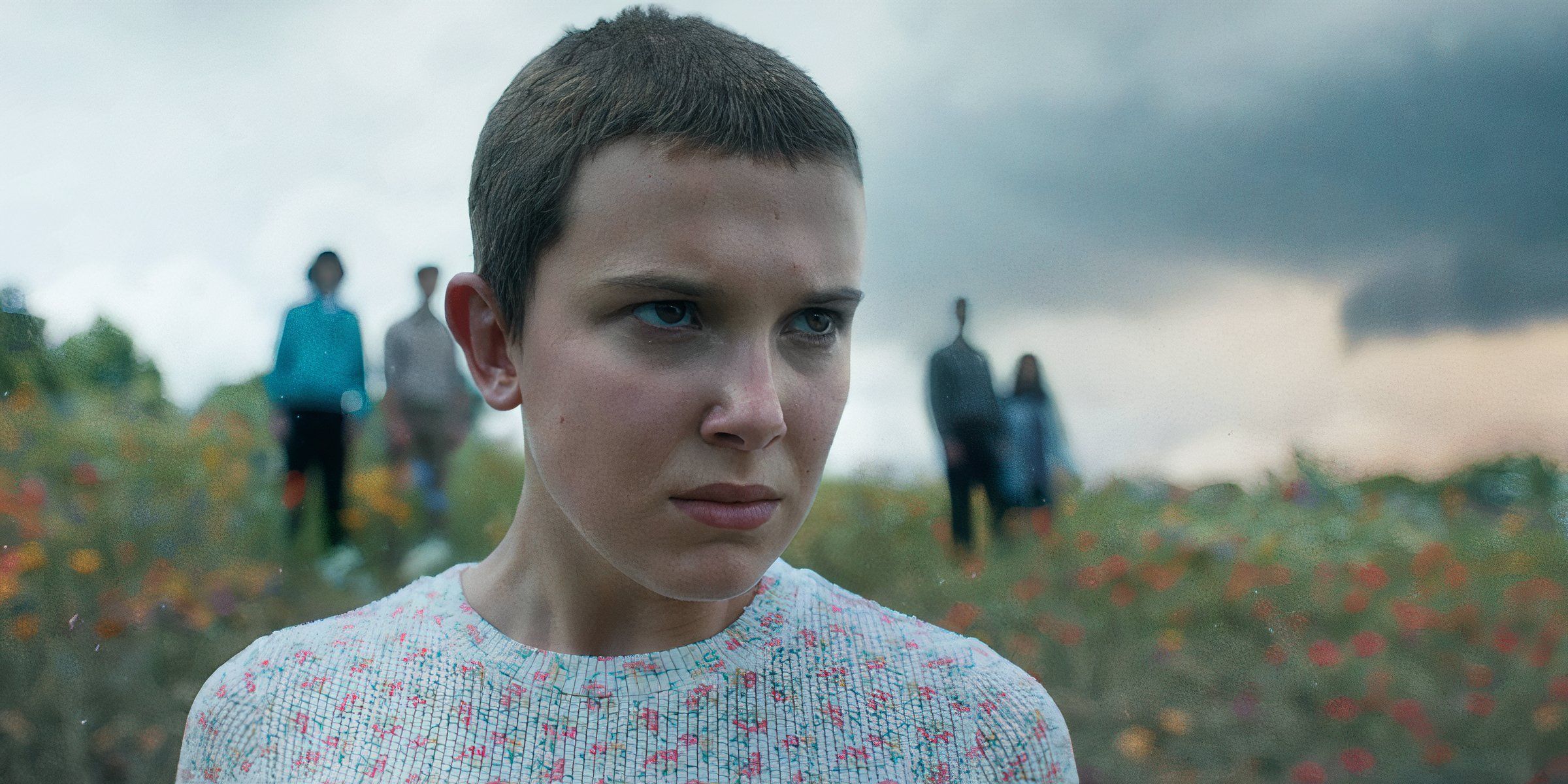
Related
Stranger Things Season 5 Just Got An Awesome Update Straight From The Duffer Brothers
Stranger Things season 5 has finished filming, and fans will want to hear what Th duffer Brothers said about the fifth and final season.
Meet Marshall And Frances: Common Side Effects’ Dynamic Duo
Q: Speaking of Marshall being a little unhinged, I love his look. He’s so smart, but he usually dresses like a hippie, he’s got his shirt open. How did you decide on Marshall’s look?
BENNETT: We thought about someone who would maybe not be taken so seriously in the science community. We thought about mycologists in general – not to stereotype anyone, but just thinking about people in that sort of alternative medicine fringe culture. Marshall’s the kind of character where he doesn’t give a sh*t. He’s a smart guy, and he’s confident, and he doesn’t care. He’s like, “F*ck you, don’t tell me how I should dress and how I should look.” So he’s a little unkempt.
But he’s the kind of person who would always represent himself in court. He’s a pacifist, but he won’t back down from an argument if he feels like he’s right. He’s outspoken and, looks-wise, maybe a little too casual at times. For his inspiration, we talked a lot about [mycologist] Paul Stamets, the hat that Paul Stamets wears, that sort of thing. We talked about John Laroche from [the film] Adaptation – the orchid thief guy.
Q: When was the decision made to give Marshall a pet tortoise who accompanies him on his travels?
HELY: I don’t know when we worked that out exactly. We had a long conversation with a tortoise biologist, and tortoises are very interesting. The more we learned about them, the more they became compelling. There are a lot of mushroom species that depend on other species, and [the tortoise] seemed like an interesting way to show that.
Q: I love that the tortoise’s name is “Mr. Socrates.” He’s so formal.
HELY: Yeah. He’s very dignified.
Q: Then, you have your other main character, Frances, who is such a huge contrast with Marshall. She’s in this bad corporate job, and in this bad relationship. What were some of the inspirations for Frances as a character?
HELY: Well, Emily Pendergast herself, who voices Frances, is a person we had worked with and knew. She’s got this very sweet-hearted energy. We wanted somebody who was maybe not as cerebral and lost in their own thoughts as Marshall, somebody who’s just struggling with the everyday. You know, “I’m trying not to be broke. I’m taking care of my mom, and that’s taking a lot of money.” And somebody like that, it seemed like that was the kind of character where she and Marshall could have this cool, weird connection. And love would be a part of it, but not all of it, and the two of them could help each other navigate these different worlds – but also be kind of lost souls together. It’s rich territory.
BENNETT: And in some ways, maybe, Frances is also a little bit more practical than Marshall. So it’s a nice contrast between the two.
Q: I came out of the show really disliking Frances’ initial boyfriend, Nick. He’s just so rude and selfish – you guys did a great job creating this character that audiences can just viscerally dislike.
HELY: We always try to put ourselves in the shoes of every character. Even if they’re annoying, we try to see things from their point of view. Like, from his point of view, his girlfriend just starts acting really weird. They’re not soulmates, I don’t think, and their relationship…well, I don’t think anyone’s going to watch it and wish they got together. But we hope that Nick has a happy life of his own. We’ll see.
Q: I found myself really rooting for Marshall and Frances, romantically – I know you can’t spoil anything, but is their relationship maybe going in that direction?
HELY: We talked a lot about those people in strange relationships where it’s like, “Oh, this person is perfectly nice, and they have probably settled into some kind of routine, but it’s just not the right thing.” It’s such a puzzle. When you see it with your friends, you don’t want to say anything about it. They might end up married. They might end up happy. Who knows? Relationships are just so strange and mysterious and personal, and it seemed fun to play with, you know? Like – “maybe this is one that shouldn’t be happening, but who am I to judge?”
Q: Another relationship I loved was between the pair of federal agents who pursue Marshall and Frances. They’ve got a serious job, but they’re so goofy, they’re introduced dancing to “Shake Sonora” in their car.
HELY: That sequence is one Joe came up with. He was trying to show a deep relationship without saying a word. And I think he did. I love it. It’s a great bit of animation.
Q: Lastly, what will you be doing to celebrate the series’ launch?
BENNETT: I don’t know. Maybe just watch the premiere at a bar? To be honest, we haven’t really thought about it.
[END]
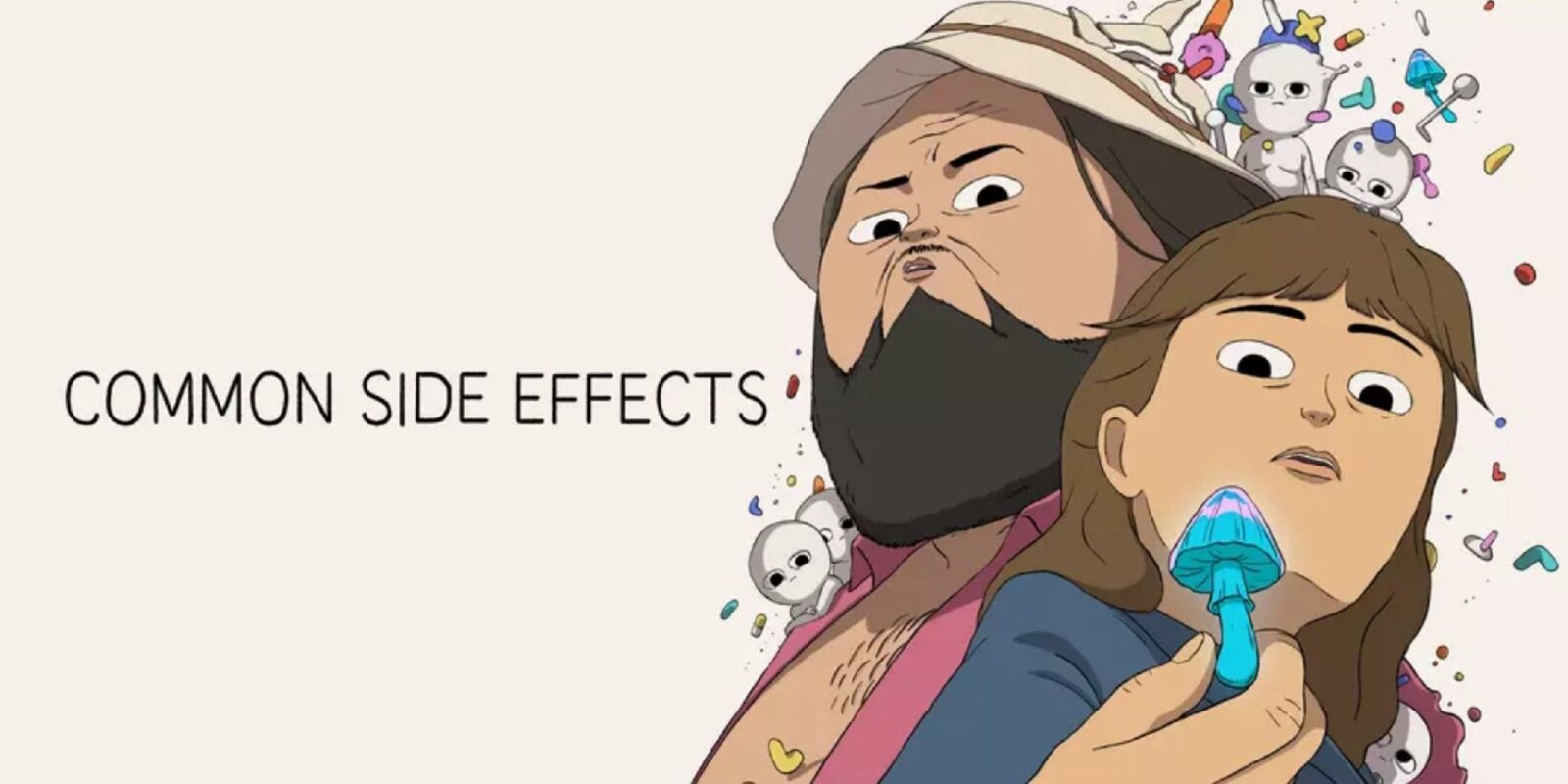
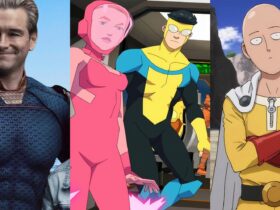
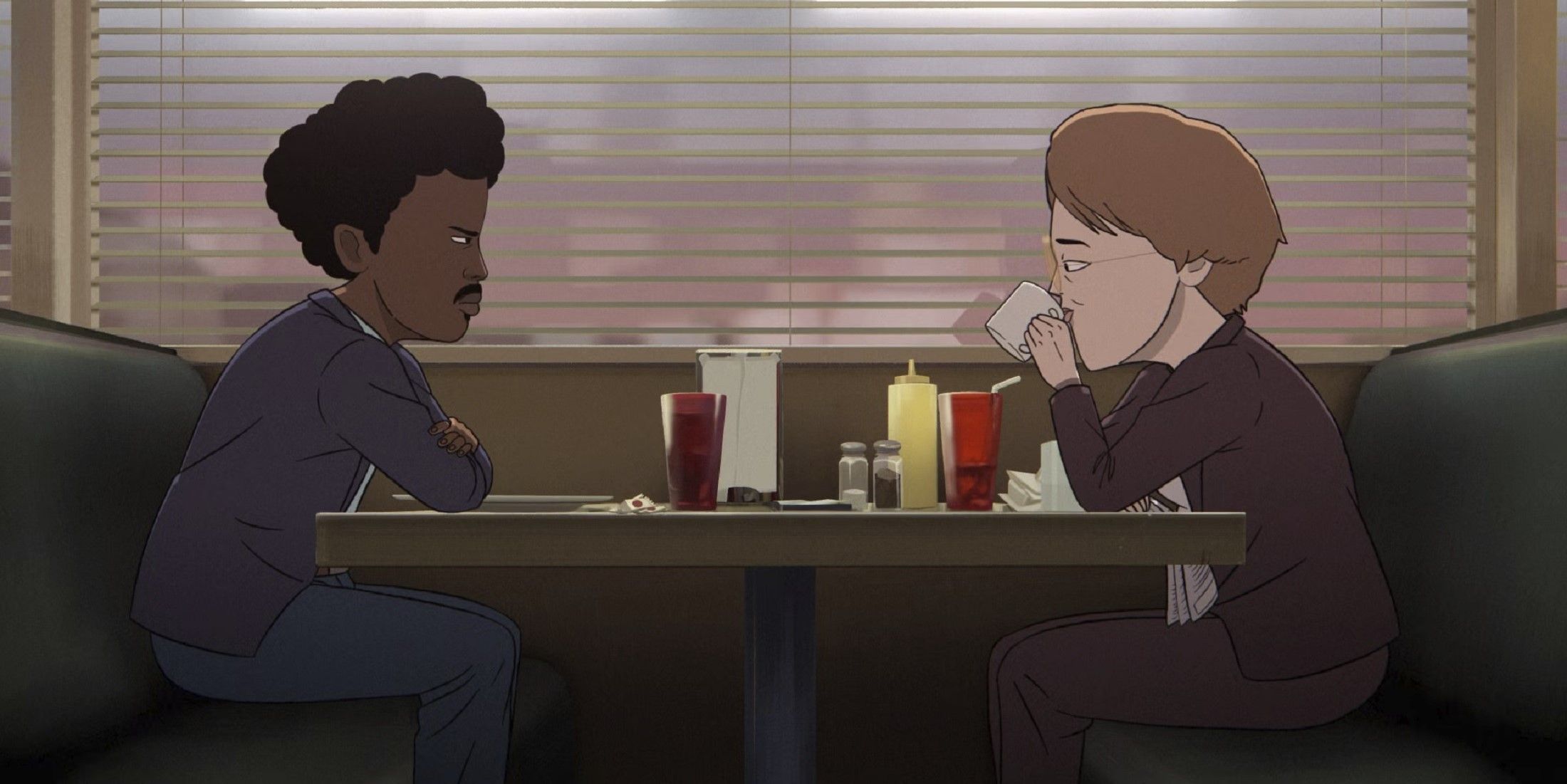
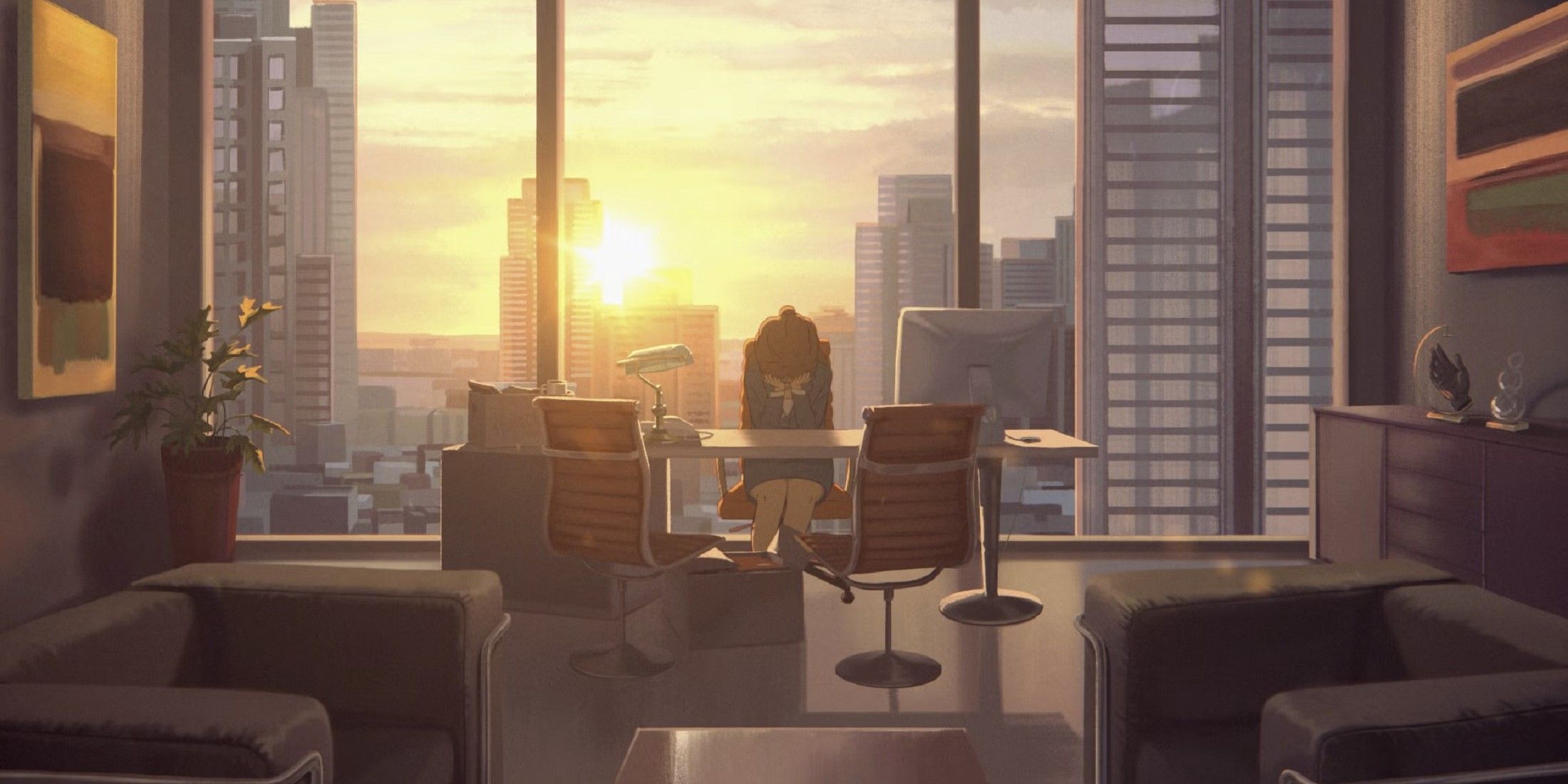
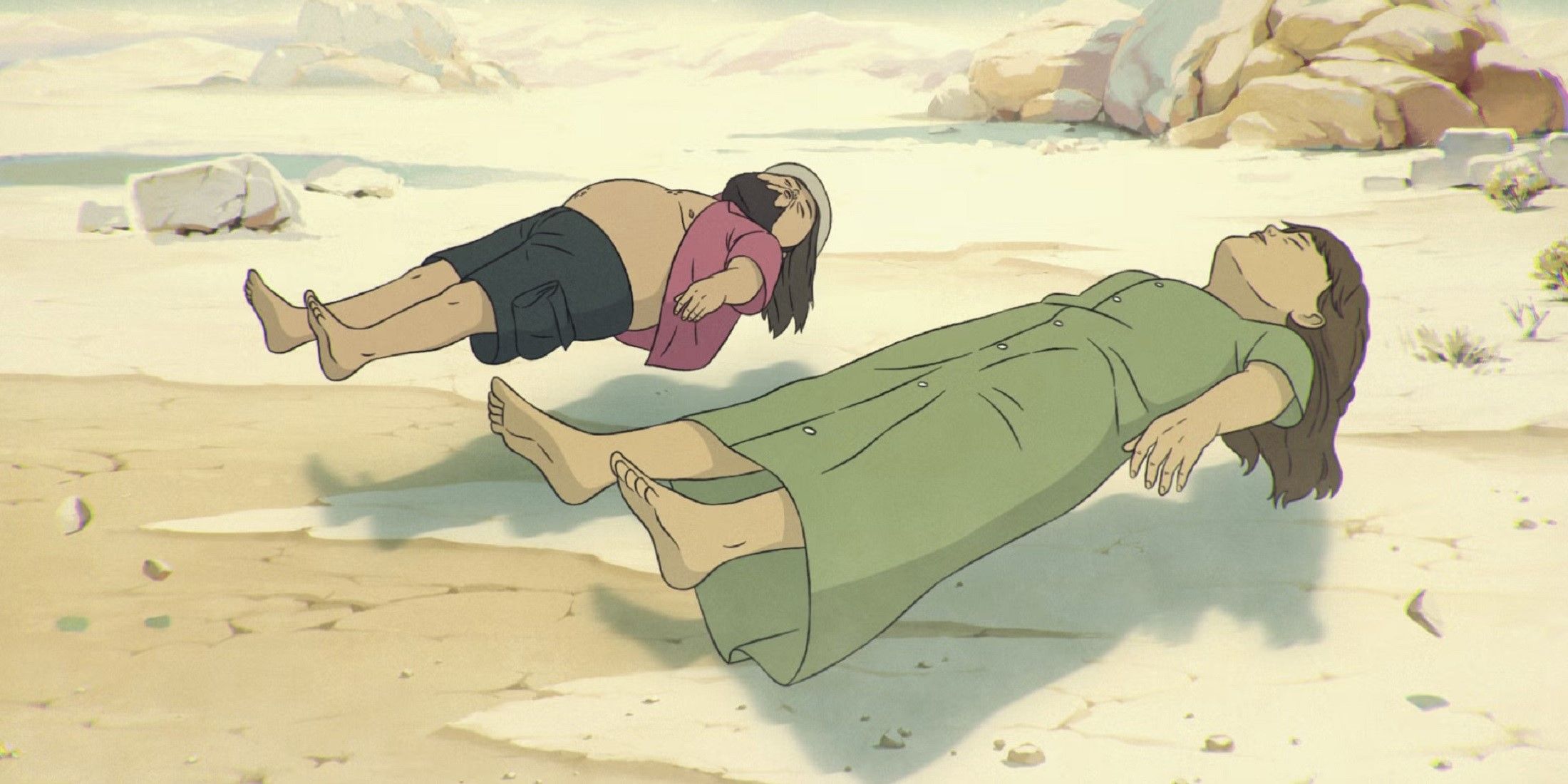



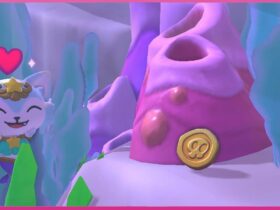
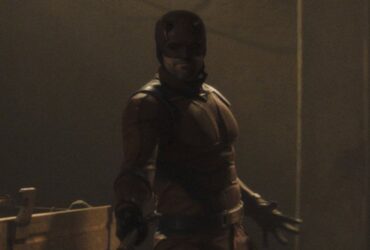

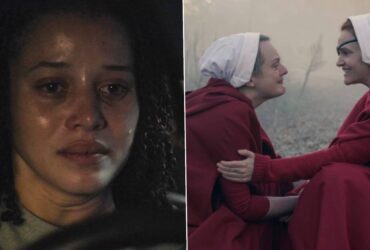
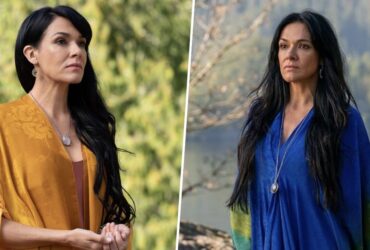
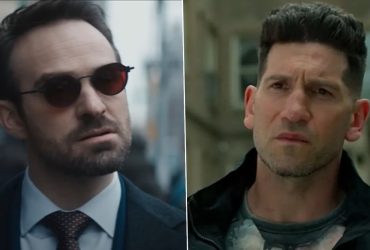

Leave a Reply